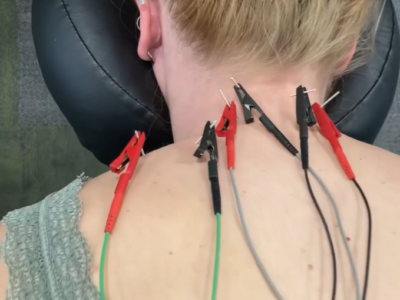Introduction: Dry needling has emerged as a popular therapeutic technique for managing musculoskeletal pain and dysfunction. This technique involves the insertion of fine needles into specific trigger points or tight muscle bands, aiming to alleviate pain and promote healing. While the precise mechanisms of dry needling are still being investigated, several theories have been proposed to explain its therapeutic effects. In this blog post, we delve into these mechanisms and shed light on the potential ways dry needling produces results.
- Trigger Point Release: One widely accepted theory suggests that dry needling works by releasing or deactivating trigger points. Trigger points are hyperirritable spots within a muscle that can cause pain, muscle tension, and referred pain. When a needle is inserted into a trigger point, it can mechanically disrupt the dysfunctional muscle fibers, leading to a local twitch response. This twitch response is believed to relax the muscle fibers, improve blood flow, and reduce pain. (Dommerholt & Chou, 2010)
- Neuromodulation: Dry needling may exert its effects by modulating the nervous system, particularly the peripheral nerves and spinal cord. The insertion of needles can stimulate sensory receptors, promoting the release of endogenous opioids, which are natural pain-relieving substances. Additionally, needle stimulation may alter the balance of neurotransmitters involved in pain modulation, thereby influencing pain signals and perception. (Hsieh et al., 2017)
- Local Blood Flow and Inflammation: The needle insertion during dry needling may trigger local vasodilation and increased blood flow to the treated area. This enhanced blood circulation can deliver oxygen and nutrients to the tissues, facilitate the removal of metabolic waste products, and reduce inflammation. By improving the microenvironment within the muscles, dry needling may support tissue healing and recovery. (Tough et al., 2009)
- Neurophysiological Effects: Dry needling may initiate a series of neurophysiological responses that contribute to its therapeutic effects. These responses can include changes in muscle activation patterns, improved muscle coordination, and enhanced tissue repair processes. By influencing the neurophysiological aspects of the musculoskeletal system, dry needling may optimize muscle function and promote recovery. (Kietrys et al., 2013)
Conclusion: While the exact mechanisms of dry needling are still being explored, current theories provide insights into how this technique produces its therapeutic effects. Trigger point release, neuromodulation, local blood flow and inflammation, and neurophysiological responses are among the proposed mechanisms. However, it’s important to note that individual responses to dry needling may vary, and its efficacy is often achieved when combined with other complementary treatments.
At Rx Rehab Physical Therapy in American Fork we are licensed and certified to evaluate and treat using dry needles. By working closely with a knowledgeable practitioner, you can benefit from the potential therapeutic effects of dry needling in managing musculoskeletal pain and promoting overall well-being.
Disclaimer: This blog post is for informational purposes only and should not be considered medical advice. Always consult with a qualified healthcare professional for personalized guidance and treatment options.
References:
- Dommerholt, J., & Chou, L. W. (2010). Trigger point dry needling. Journal of Manual & Manipulative Therapy, 18(4), 200-206.
- Hsieh, Y. L., Yang, S. A., Yang, C. C., Chou, L. W., & Dry Needling for Trigger Point Pain Relief. (2017). Dry Needling for Trigger Point Pain Relief. Current Rheumatology Reviews, 13(1), 27-36.
- Tough, Et al., (2009). Acupunture and dry needling in the management of myofascial trigger point pain: a systematic review and meta-analysis of randomized controlled trials. Eur J Pain, Jan; 13(1):3-10.
- Kietrys, D. M., Palombaro, K. M., Azzaretto, E., & Hubler, R. (2013). Effectiveness of dry needling for upper-quarter myofascial pain: a systematic review and meta-analysis. Journal of Orthopaedic & Sports Physical Therapy, 43(9), 620-634.

